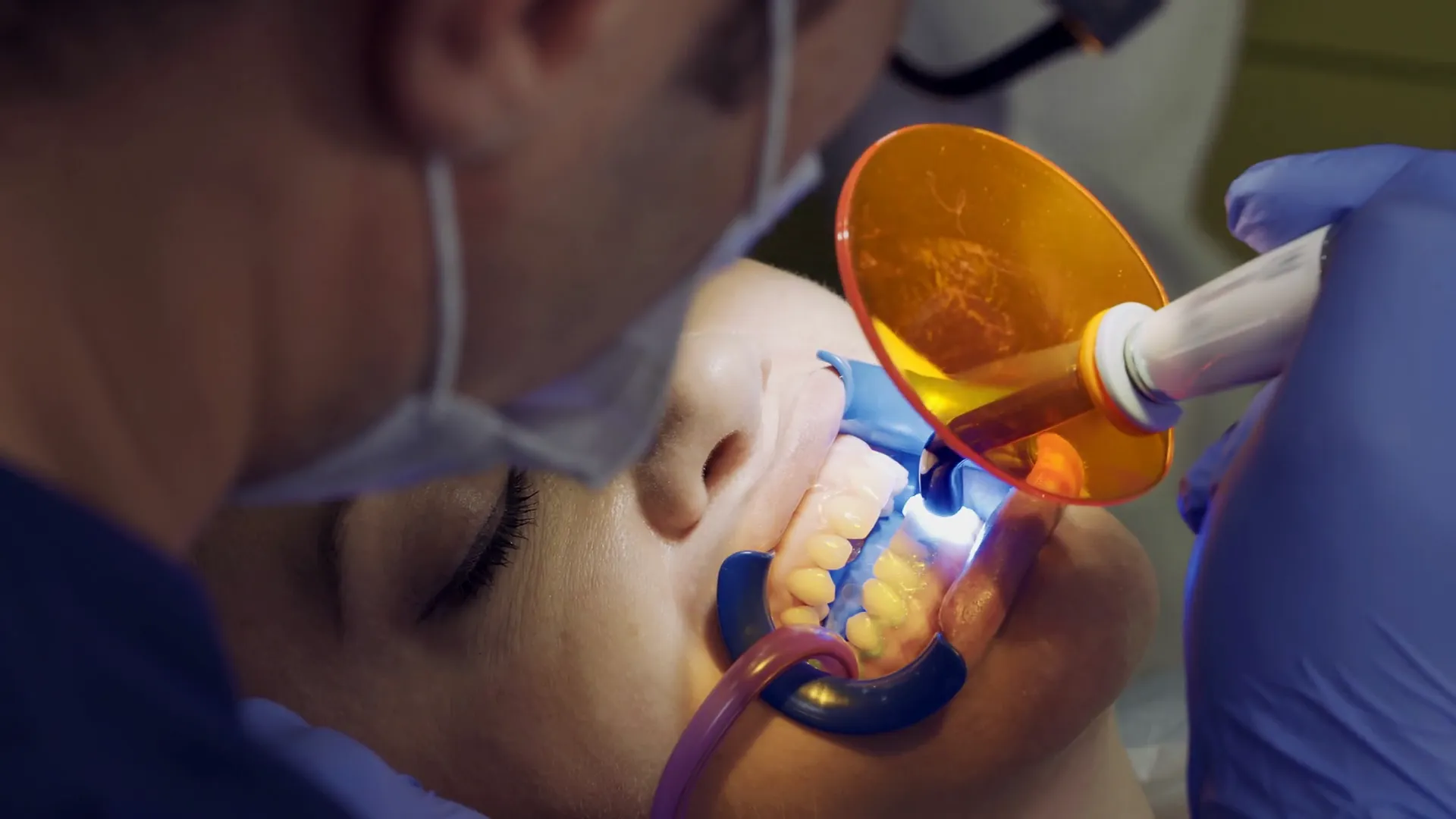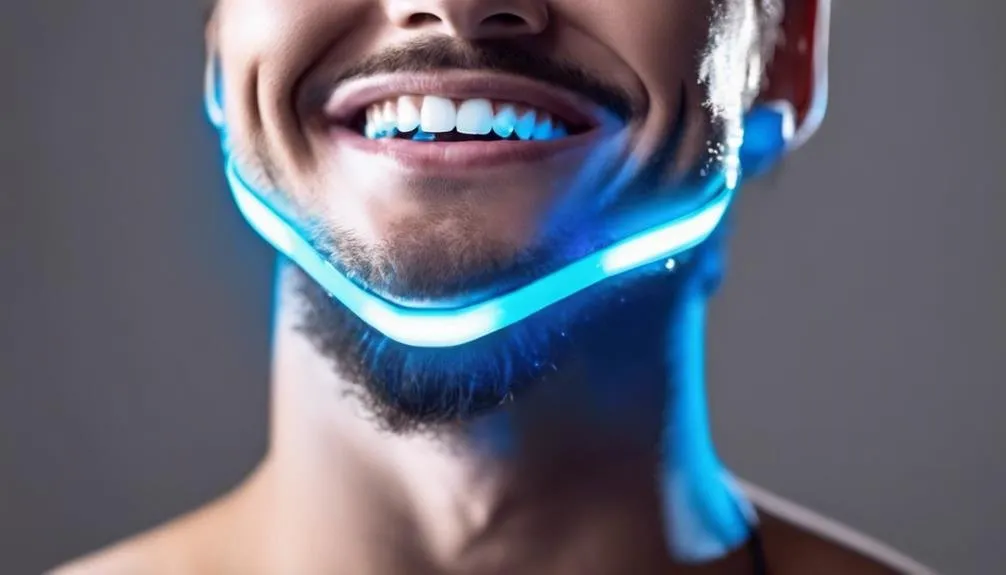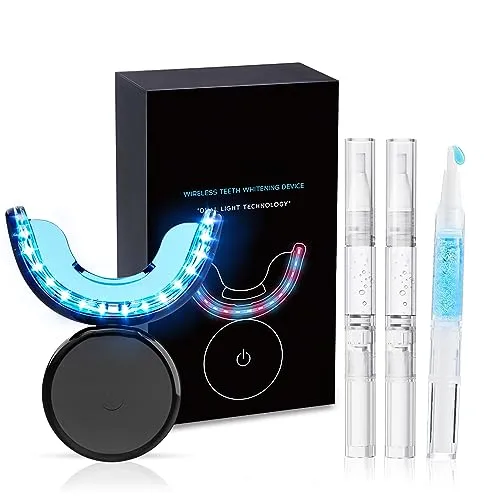A brighter smile is often associated with confidence and good health. If you are looking to enhance your smile, teeth whitening light treatments offered by dentists can be an effective solution. This comprehensive guide explores everything you need to know about teeth whitening light, from its mechanism and benefits to different types and aftercare tips. Learn how a teeth whitening light can transform your smile and boost your confidence.
What Is Teeth Whitening Light
Teeth whitening light treatments utilize a special light source to accelerate the bleaching process, making teeth whiter and brighter. This procedure, typically performed by a dentist, involves applying a bleaching agent, usually hydrogen peroxide, to the teeth. The light then activates the bleaching agent, helping it penetrate the enamel and break down stains and discoloration. This process is significantly more effective than over-the-counter whitening products because the dentist-administered treatment uses stronger bleaching agents and is applied under professional supervision. The intensity and wavelength of the light are carefully controlled to maximize whitening results while minimizing potential side effects, such as tooth sensitivity. The entire process is designed to be safe and efficient, providing patients with noticeable improvements in a short amount of time.
How Teeth Whitening Light Works
The effectiveness of teeth whitening light is based on a chemical reaction activated by the light source. The process typically begins with the dentist cleaning the teeth to remove any surface debris. Next, a high-concentration bleaching gel, containing hydrogen peroxide, is applied to the surface of the teeth. The light, often a blue LED or halogen light, is then directed at the teeth. This light emits specific wavelengths that activate the hydrogen peroxide, accelerating the breakdown of stain molecules within the enamel. The activated gel penetrates the porous enamel and oxidizes the stained molecules, effectively removing them and lightening the teeth. This procedure is carefully monitored to ensure even whitening and to protect the gums and soft tissues from irritation.
Teeth Whitening Light The Benefits

Teeth whitening light offers numerous benefits that extend beyond just a brighter smile. The most immediate advantage is the aesthetic improvement, leading to increased self-esteem and confidence. People with whiter teeth often feel more comfortable smiling and interacting socially. In addition to aesthetic enhancements, professional teeth whitening is a relatively quick procedure, often completed in a single office visit. The results are immediate and noticeable, providing significant satisfaction to the patient. Moreover, the treatment is typically performed under the supervision of a dentist, ensuring safety and reducing the risk of complications like sensitivity. Professional whitening also helps in removing stubborn stains caused by coffee, tea, tobacco, and other factors, which over-the-counter products often cannot address effectively.
Teeth Whitening Light Types For Dentists
Dentists utilize various types of teeth whitening light to achieve optimal results. The most common types include LED lights, which are energy-efficient and produce minimal heat, reducing the risk of sensitivity. Halogen lights are another option, known for their high intensity and fast whitening action, although they may generate more heat. Laser teeth whitening is also available, offering precise control and often faster results. Each type of light has its own set of advantages, and the choice often depends on the dentist’s preference, the patient’s needs, and the specific whitening system being used. Dentists carefully consider factors such as the light’s intensity, wavelength, and safety features to ensure the best outcome for each patient.
Professional Teeth Whitening Light vs Home Kits
Professional teeth whitening light treatments offer significant advantages over home whitening kits. Dentists use stronger bleaching agents, resulting in more dramatic and quicker results. The entire procedure is carried out under professional supervision, ensuring safety and minimizing potential side effects like gum irritation and tooth sensitivity. Dentists can also identify and address any underlying dental issues before the whitening process begins, ensuring the best possible outcome. Home kits, on the other hand, typically contain lower concentrations of bleaching agents, which take longer to produce visible results and may not be as effective for stubborn stains. While home kits are more affordable and convenient, they lack the professional expertise and advanced technology available in a dental office. The personalized approach of a dentist ensures that the treatment is tailored to the individual’s needs, providing superior and safer results.
Teeth Whitening Light Procedure Step By Step

The teeth whitening light procedure typically involves several key steps. First, the dentist will conduct a thorough examination and cleaning to remove any plaque or debris. The gums are then protected with a barrier to prevent irritation from the bleaching agent. Next, a high-concentration bleaching gel is applied to the teeth, and the special light is directed at them for a specified period. The dentist may apply the gel multiple times during the session to achieve the desired results. After the treatment, the dentist will remove the gel, rinse the mouth, and may apply a fluoride treatment to reduce any sensitivity. The entire process is usually completed in a single visit, with each session lasting from 30 minutes to an hour, depending on the specific whitening system.
Teeth Whitening Light Aftercare Tips
Proper aftercare is crucial for maintaining the results of teeth whitening light treatments. Patients should avoid foods and drinks that can stain teeth, such as coffee, tea, red wine, and dark-colored berries, for at least the first 48 hours after the procedure. Tobacco products should also be avoided. Regular brushing and flossing are essential for keeping teeth clean and preventing new stains from forming. The dentist may recommend using a special whitening toothpaste and mouthwash to help maintain the results. Routine dental check-ups and cleanings are also important for monitoring the health of the teeth and preventing future staining. Following these tips will help extend the life of the whitening results and keep your smile bright and healthy.
Teeth Whitening Light Common Questions
Many patients have questions about teeth whitening light treatments. Common concerns include the potential for tooth sensitivity, which is usually temporary and can be managed with sensitivity toothpaste or fluoride treatments. Another frequently asked question is about the longevity of the results, which can vary depending on the patient’s habits and diet. Generally, the results can last from several months to a few years, but they can be maintained with proper aftercare and touch-up treatments. Some patients also inquire about the safety of the procedure, which is generally considered safe when performed by a trained dentist. It’s important to discuss any specific concerns or questions with your dentist before undergoing the procedure to ensure you have a clear understanding of the process and potential outcomes.
In conclusion, teeth whitening light treatments are a highly effective way to achieve a brighter and more confident smile. By understanding the process, benefits, and aftercare tips, you can make an informed decision about whether this treatment is right for you. Always consult with your dentist to discuss your specific needs and expectations, ensuring you receive the best possible care and achieve the smile you desire. A brighter smile is within reach with the help of modern dental technology and professional expertise.
